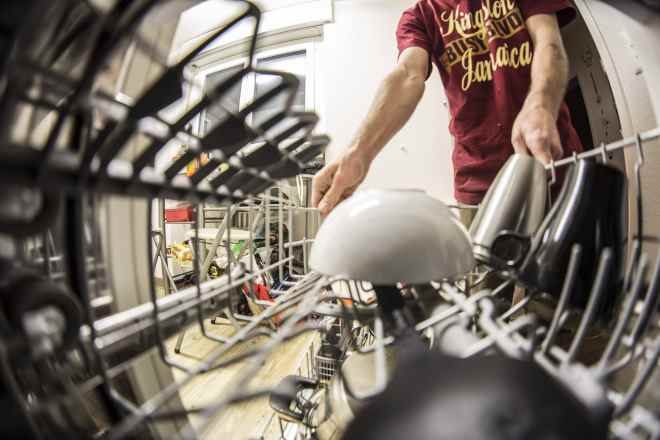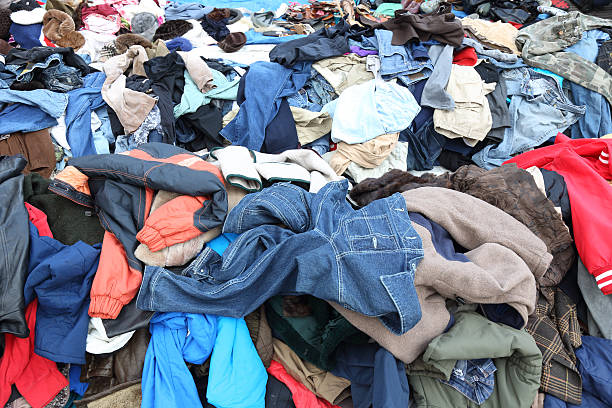A Guide to Understanding Washing Machine Maintenance
This guide provides readers with clear and useful information about the proper care and maintenance of washing machines commonly used in Indonesia. It explains essential maintenance steps, how to identify common issues, and offers insights on keeping household appliances in good condition. The content is intended for educational purposes only and aims to help users understand how washing machines function and how routine maintenance can prevent common mechanical problems.

Washing machines are among the most frequently used appliances in homes across the Philippines, yet they often receive the least attention until something goes wrong. A well-maintained washing machine can last for many years, saving money on repairs and replacements while continuing to deliver clean, fresh-smelling laundry. This guide explores essential maintenance practices that will help keep washing machines running efficiently for years to come.
Understanding the Importance of Regular Washing Machine Maintenance
Regular maintenance of washing machines is not just about preventing breakdowns; it’s about optimizing performance and efficiency. When washing machines are properly maintained, they use less water and electricity, clean clothes more effectively, and operate more quietly. According to appliance experts, routine maintenance can extend a washing machine’s lifespan by up to 50%, potentially adding years of service before replacement becomes necessary.
Maintenance also helps prevent common issues like unpleasant odors, mold growth, and detergent buildup that can affect both the machine’s performance and clothes. By establishing a regular maintenance schedule, homeowners protect both their investment and the quality of their laundry.
Common Signs That Indicate Your Washing Machine Needs Attention
Being aware of warning signs can help address potential problems before they escalate into major repairs. If a washing machine makes unusual noises during operation, particularly grinding, scraping, or thumping sounds, this could indicate loose or damaged components that need attention. Similarly, vibration or movement during cycles might suggest an unbalanced drum or worn shock absorbers.
Water-related issues are equally important to monitor. Leaks around the machine, slow draining, or incomplete water filling are all signs that something isn’t functioning correctly. If clothes remain excessively wet after the spin cycle or if there are unusual odors in the machine or on laundry, these could indicate problems with the drain pump or mold buildup in hidden areas.
Perhaps the most obvious sign is poor cleaning performance. If clothes aren’t getting as clean as they once did despite using the same detergent and settings, the washing machine likely needs maintenance or repair.
Simple Cleaning Steps to Keep Your Appliance in Good Condition
Maintaining a washing machine doesn’t require specialized skills or tools. Start with the most accessible component: the detergent dispenser drawer. Remove it completely (consult the manual if necessary) and soak in warm water to dissolve detergent residue. Use an old toothbrush to clean hard-to-reach areas before reinstalling.
The drum itself needs regular attention too. Run an empty hot water cycle with two cups of white vinegar or a specialized washing machine cleaner monthly to remove soap scum and mineral deposits. For front-loading machines, wipe down the rubber gasket around the door after each use to prevent mold growth, paying special attention to the folds where moisture can accumulate.
External maintenance is also important. Clean the exterior with a mild detergent solution, check water hoses for cracks or bulges at least twice yearly, and ensure the machine is level to prevent excessive vibration during operation. Keep the area around the washing machine clean and dry to prevent moisture-related issues.
How Regular Maintenance Extends the Lifespan of Your Washing Machine
Consistent maintenance directly impacts the longevity of washing machines. One of the most significant benefits is the prevention of limescale buildup, particularly important in areas with hard water throughout the Philippines. Limescale can damage heating elements, clog pipes, and reduce efficiency. Using water softeners or running regular descaling cycles can prevent these issues.
Maintenance also reduces strain on mechanical components. When lint and debris are regularly cleared from filters, the machine doesn’t have to work as hard to pump water, reducing wear on the motor and pump. Similarly, keeping the drum clean and balanced minimizes stress on the bearings and suspension system.
Preventing small issues from becoming major problems is perhaps the most valuable aspect of maintenance. For example, promptly addressing a minor leak can prevent water damage to electronic components that would require expensive repairs or total replacement.
Educational Insights for Smarter Household Appliance Care
Understanding how washing machines work can help make better maintenance decisions. Modern washing machines commonly found in Filipino homes contain sophisticated electronic components alongside traditional mechanical parts. This combination requires a balanced approach to care that addresses both aspects.
Learning to interpret machine error codes can save time and money when troubleshooting problems. Most manufacturers provide this information in the user manual or online. Additionally, understanding the purpose of different cycles can help use the machine more effectively – for instance, running occasional hot water cycles helps clean the internal components even if clothes are typically washed in cold water.
Consider keeping a maintenance log to track when various tasks like cleaning filters, checking hoses, or descaling have been performed. This simple practice helps ensure nothing is overlooked and provides valuable information if professional service becomes necessary.
Cost Considerations for Washing Machine Maintenance and Repairs
Regular maintenance is significantly less expensive than major repairs or replacement. Basic maintenance supplies like washing machine cleaners typically cost between ₱200-500 per treatment, while professional descaling services range from ₱1,000-2,500 depending on machine type and location in the Philippines.
When repairs become necessary, costs vary widely based on the component affected. Below is a comparison of common repair costs in the Philippines:
| Repair Type | Typical Cost Range (₱) | Average Lifespan After Repair |
|---|---|---|
| Pump Replacement | ₱2,500 - ₱4,500 | 3-5 years |
| Motor Repair | ₱3,000 - ₱6,000 | 2-4 years |
| Control Board Replacement | ₱4,500 - ₱8,000 | 4-6 years |
| Drum Bearing Replacement | ₱3,500 - ₱7,000 | 3-5 years |
| Full Service Maintenance | ₱1,500 - ₱3,000 | Preventive measure |
Prices, rates, or cost estimates mentioned in this article are based on the latest available information but may change over time. Independent research is advised before making financial decisions.
Comparing these costs to the price of a new washing machine (₱15,000-50,000) demonstrates the value of proper maintenance and timely repairs. Many professional technicians in the Philippines offer maintenance packages that can be more economical than addressing problems individually.
Properly maintaining washing machines is an investment that pays dividends in longevity, performance, and reliability. By understanding the basics of washing machine care and implementing a regular maintenance schedule, users can avoid many common problems and extend the useful life of their appliances. Whether dealing with a top-loader or front-loader, new or old model, these maintenance principles apply universally and can help get the most value from washing machines.




